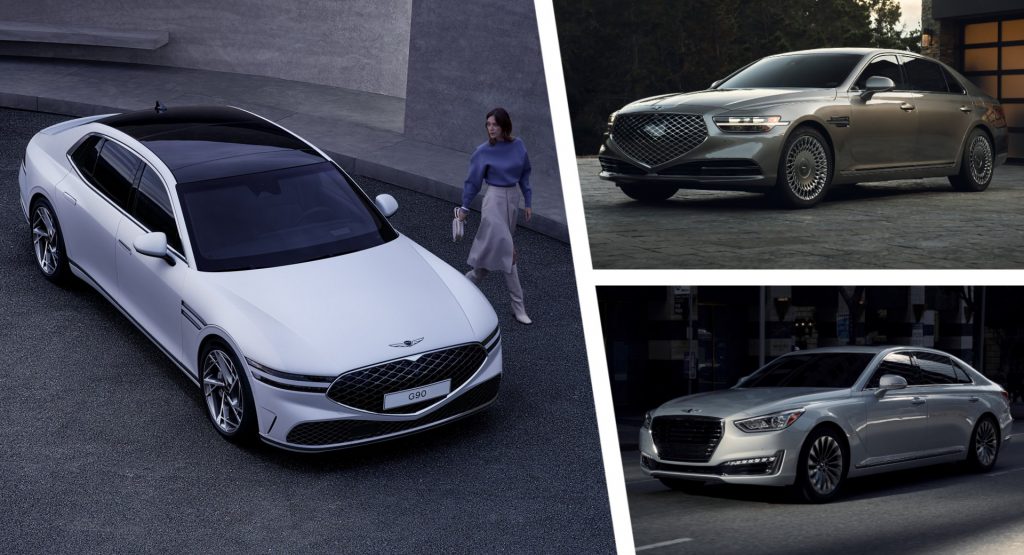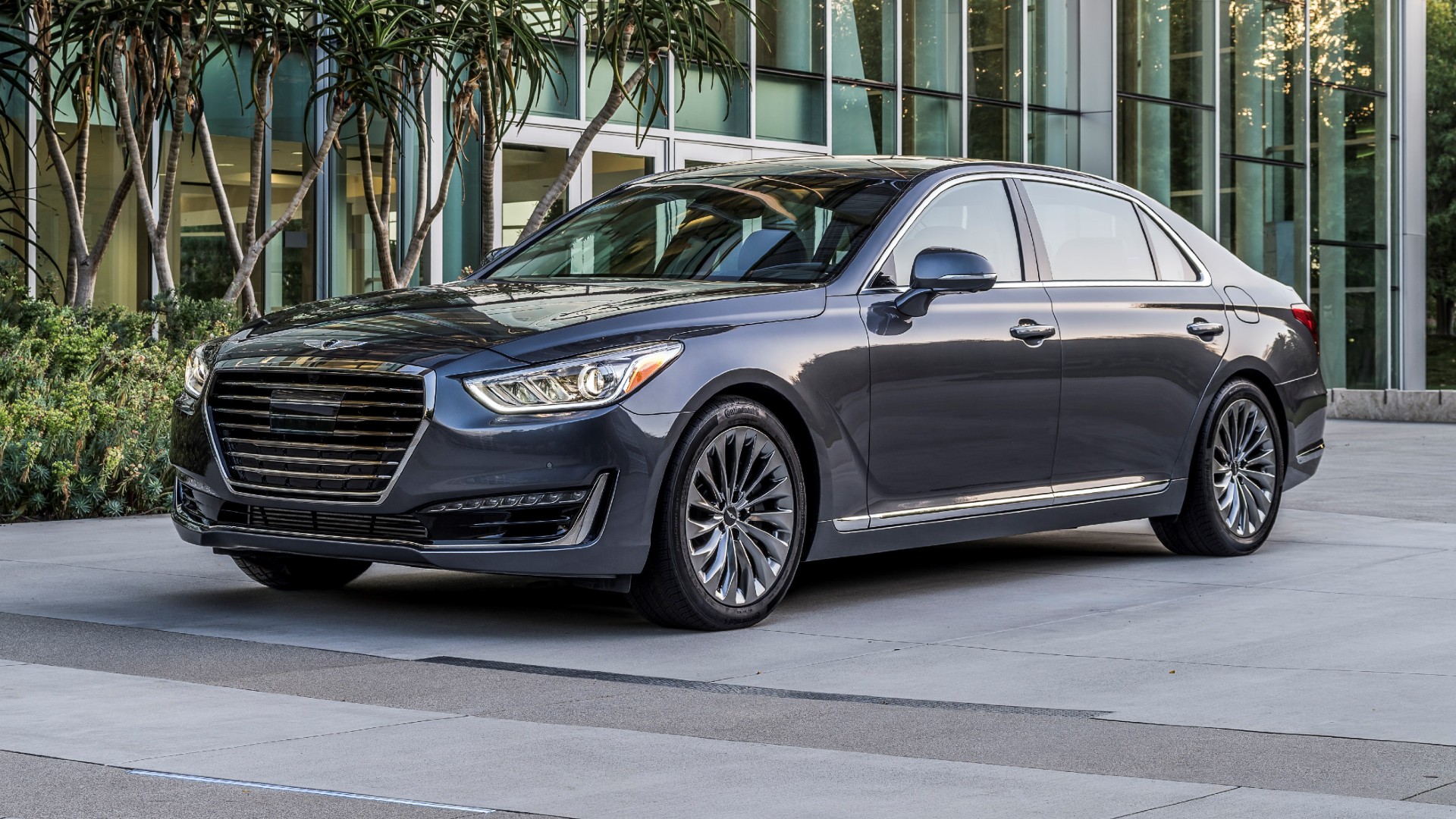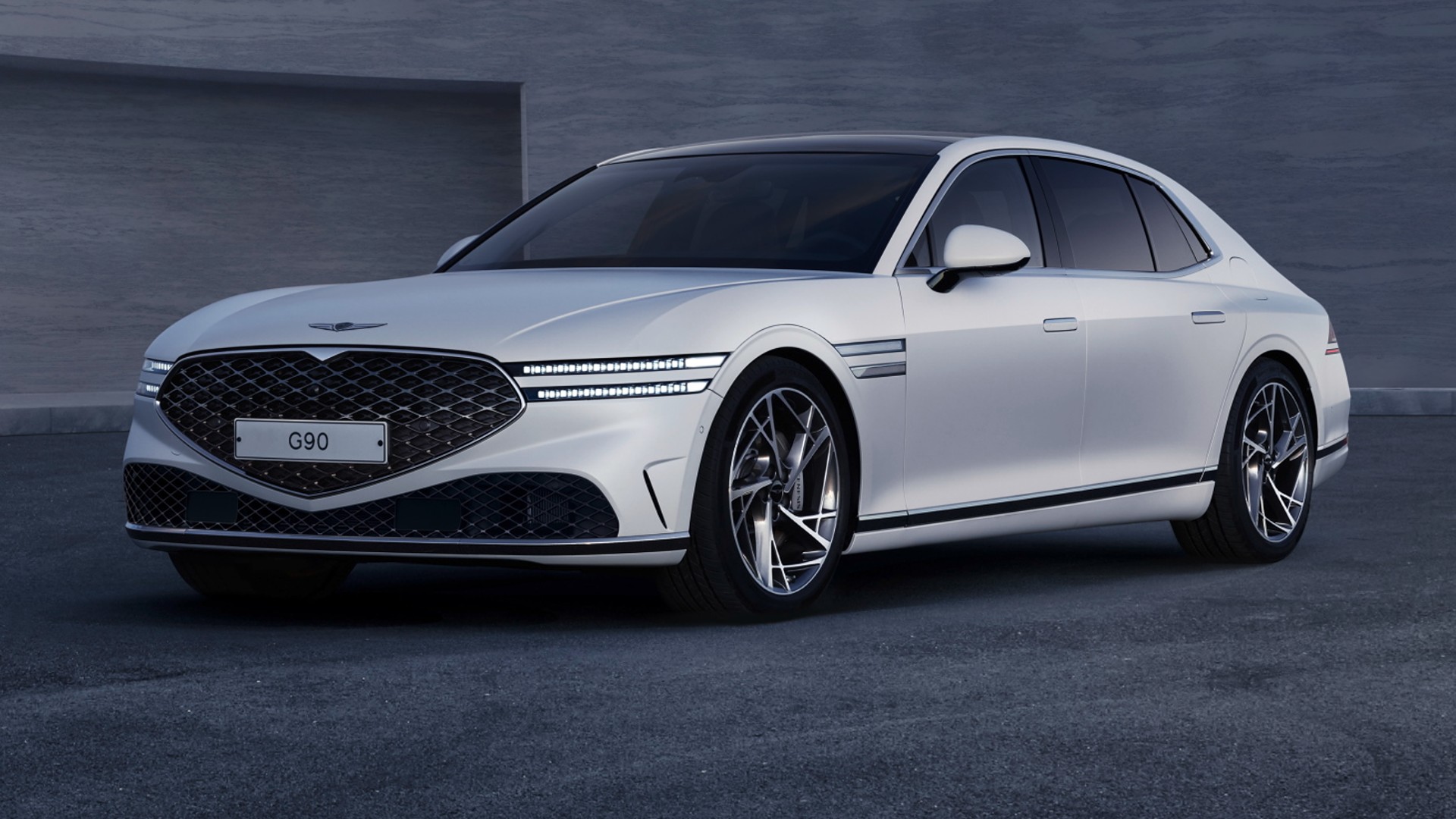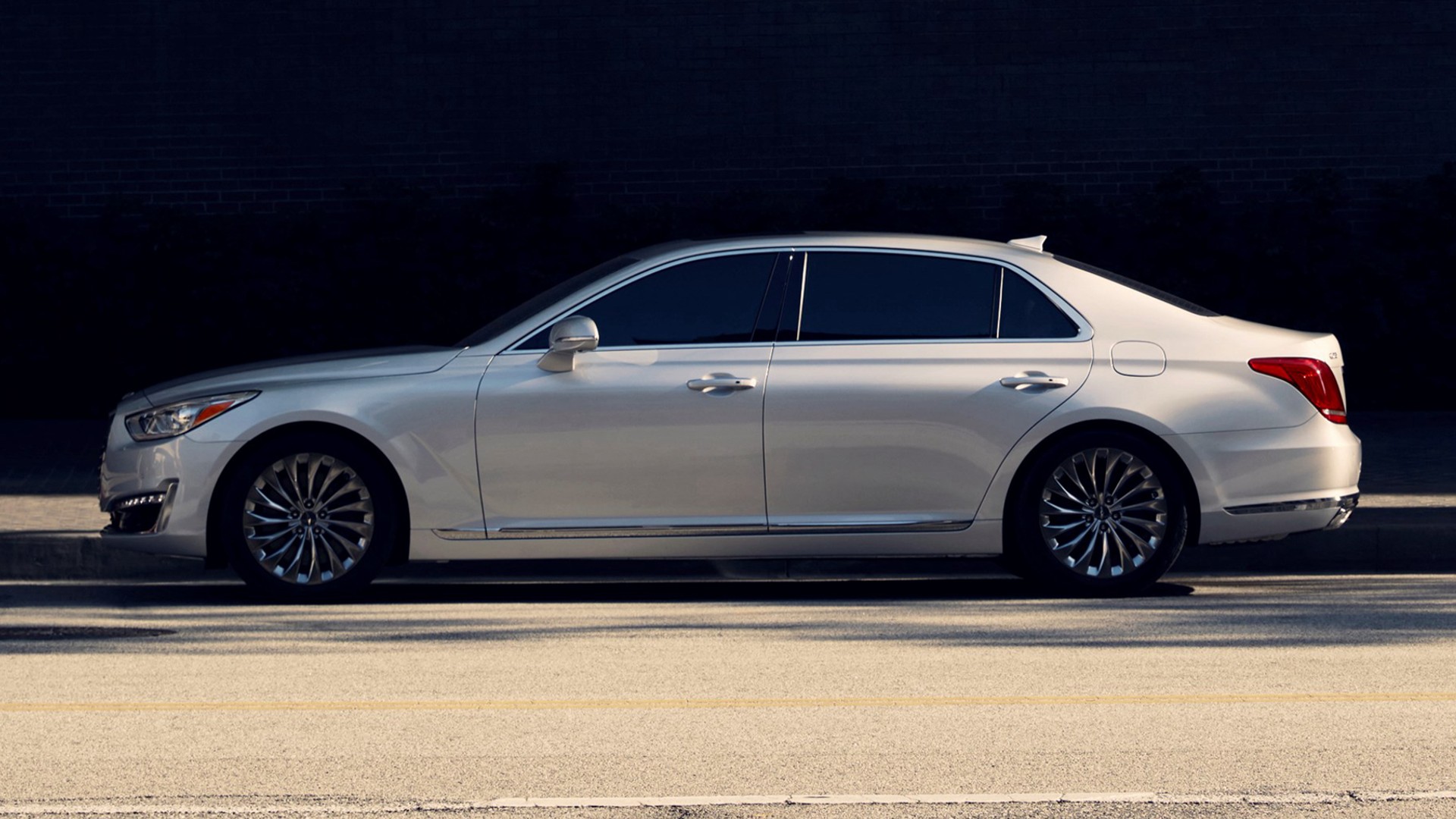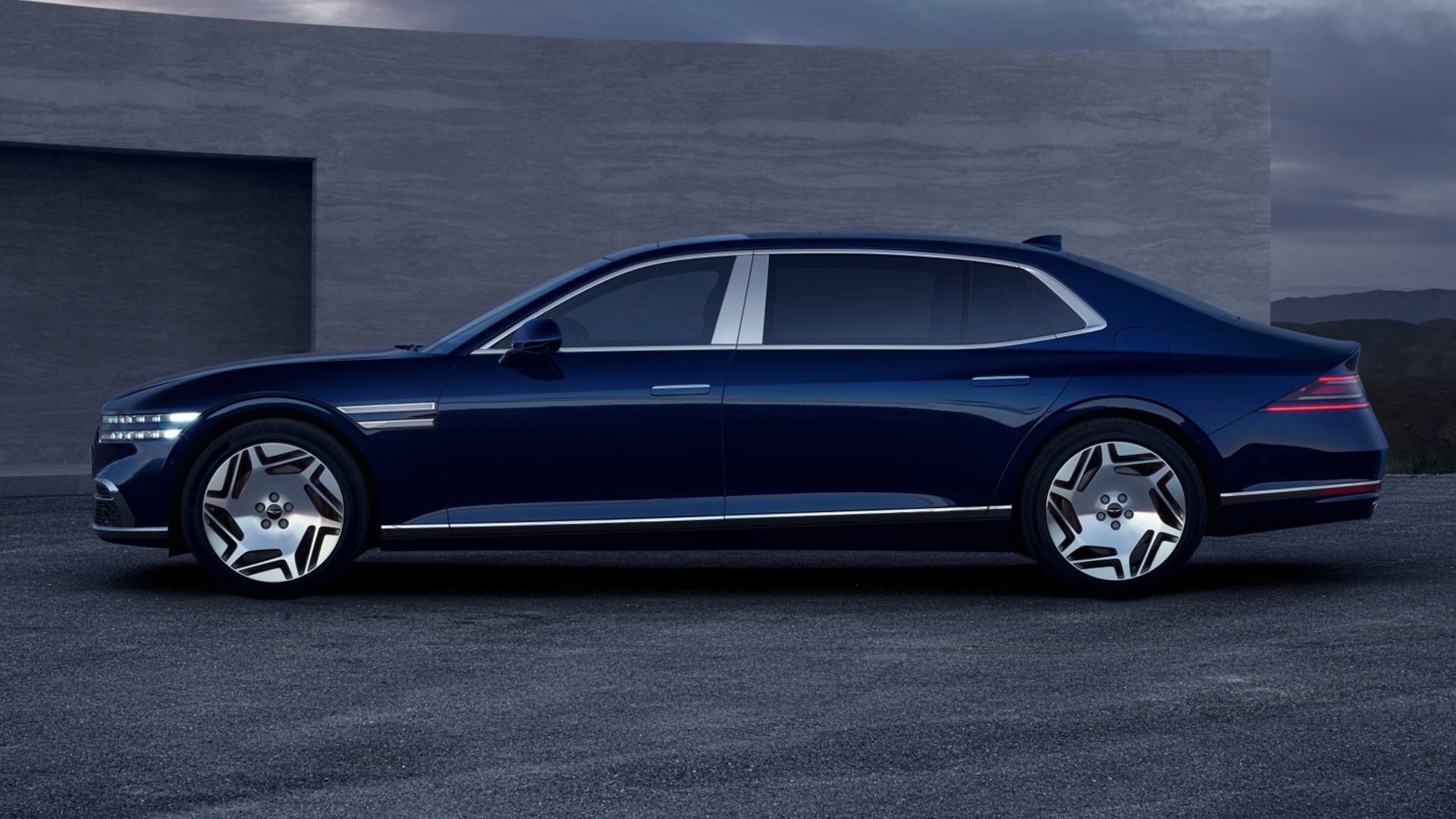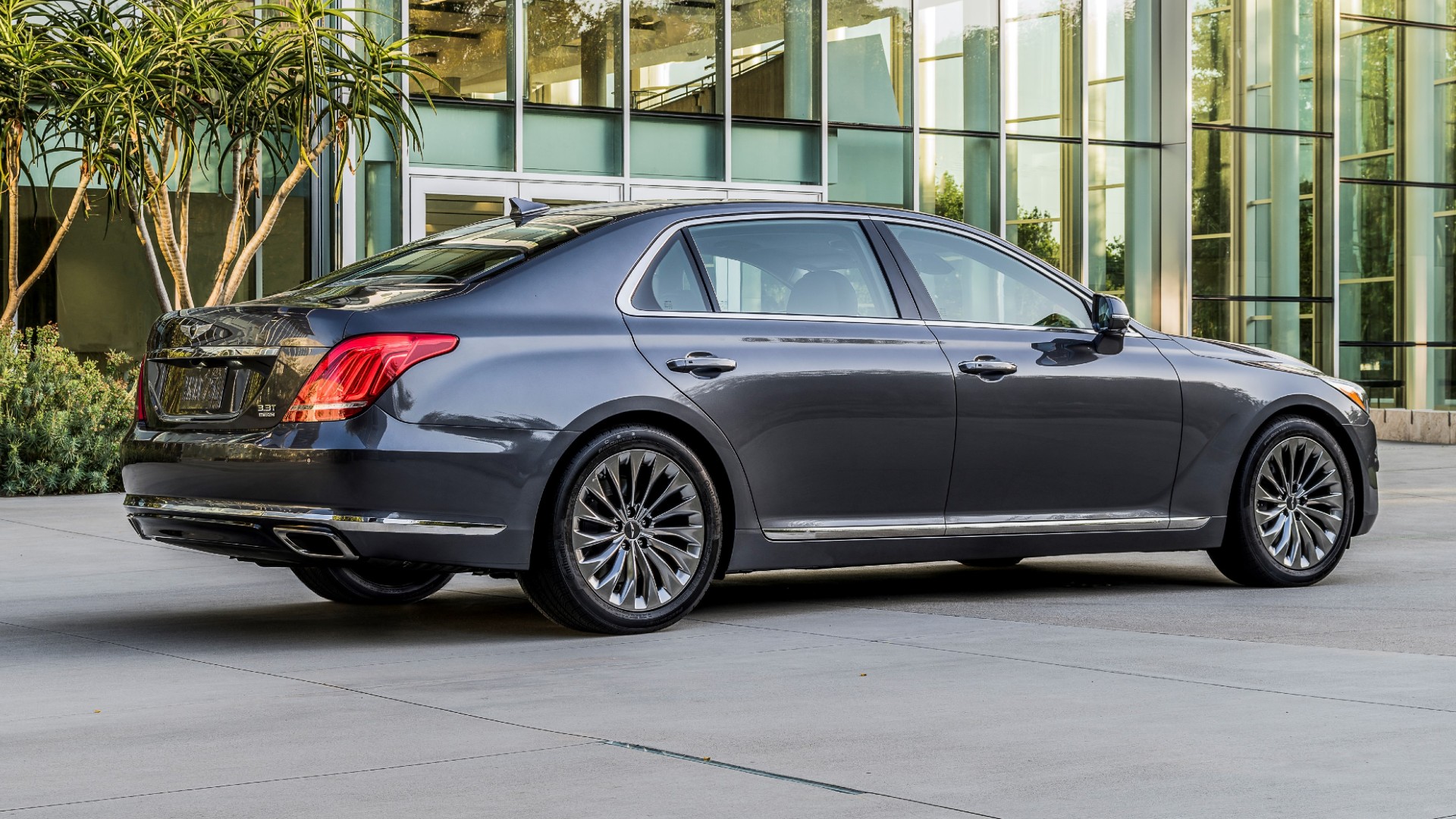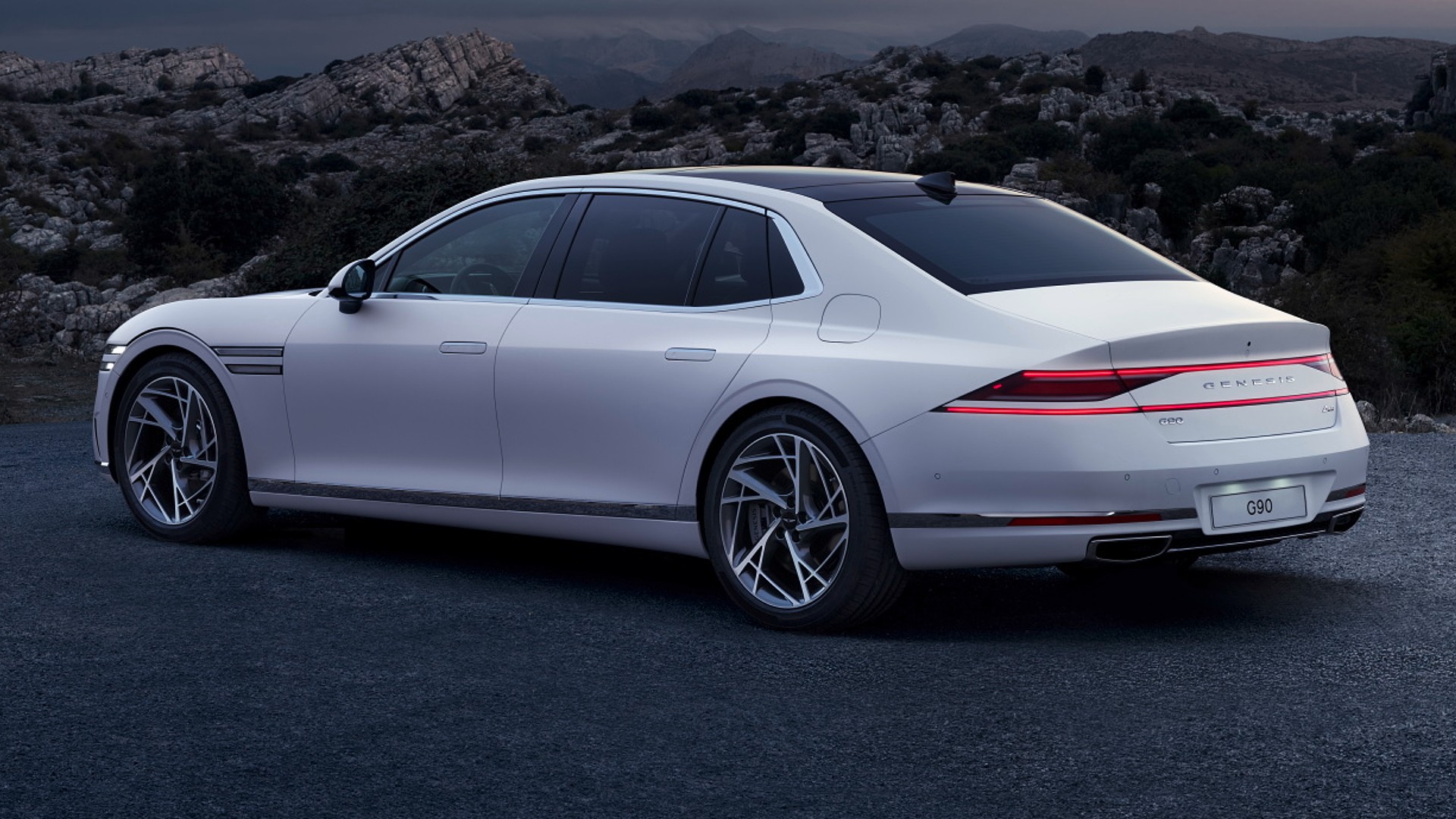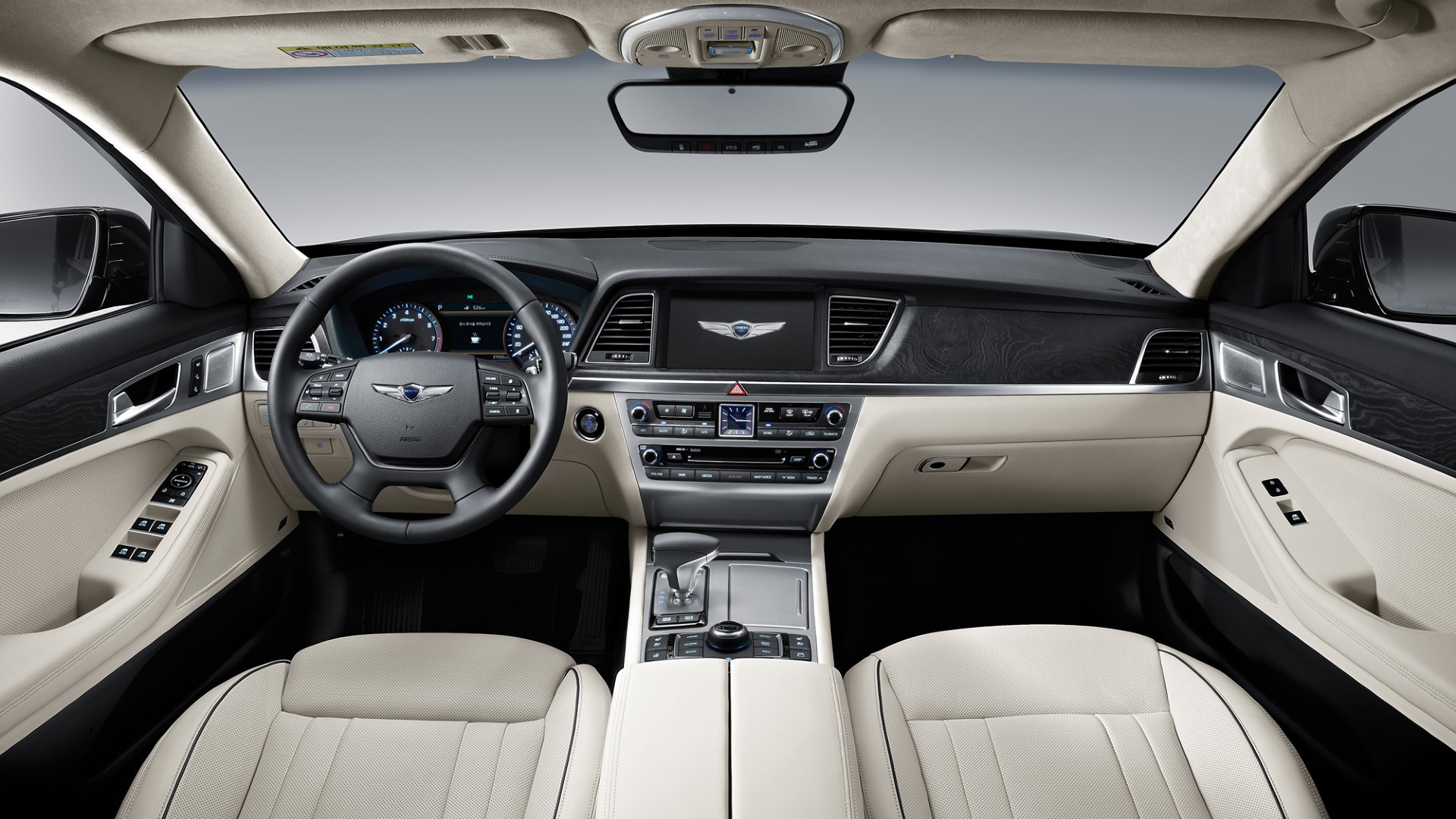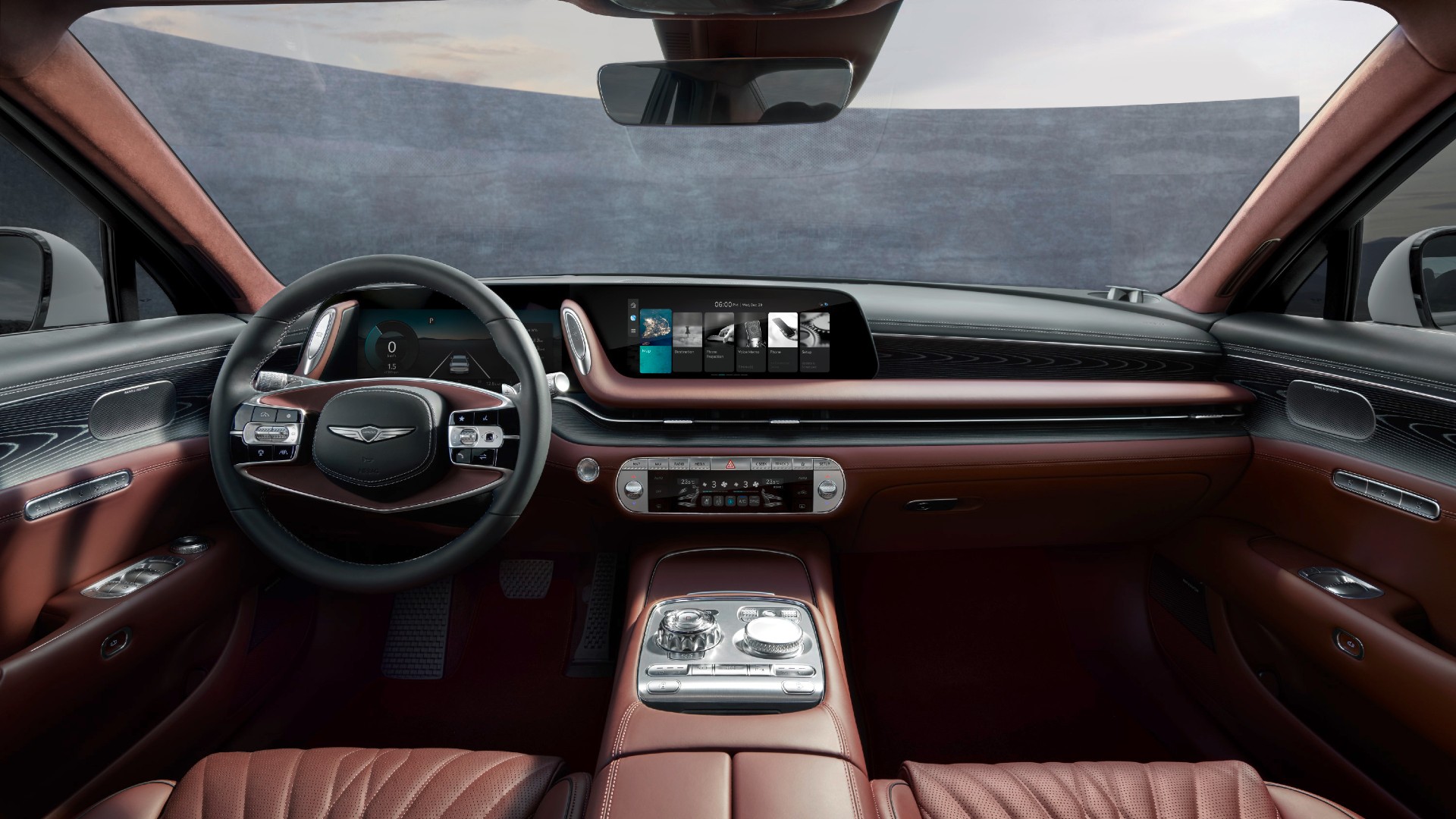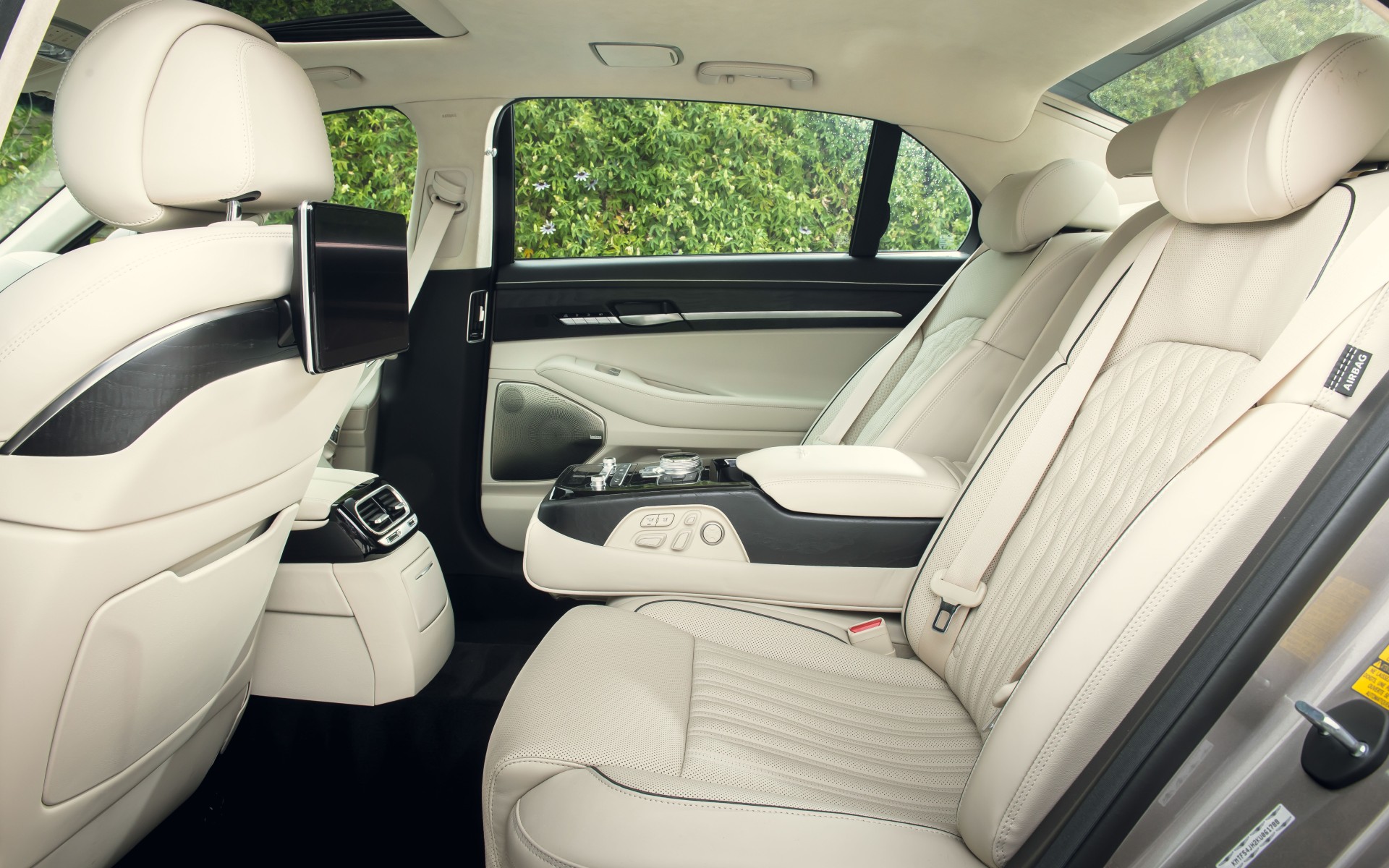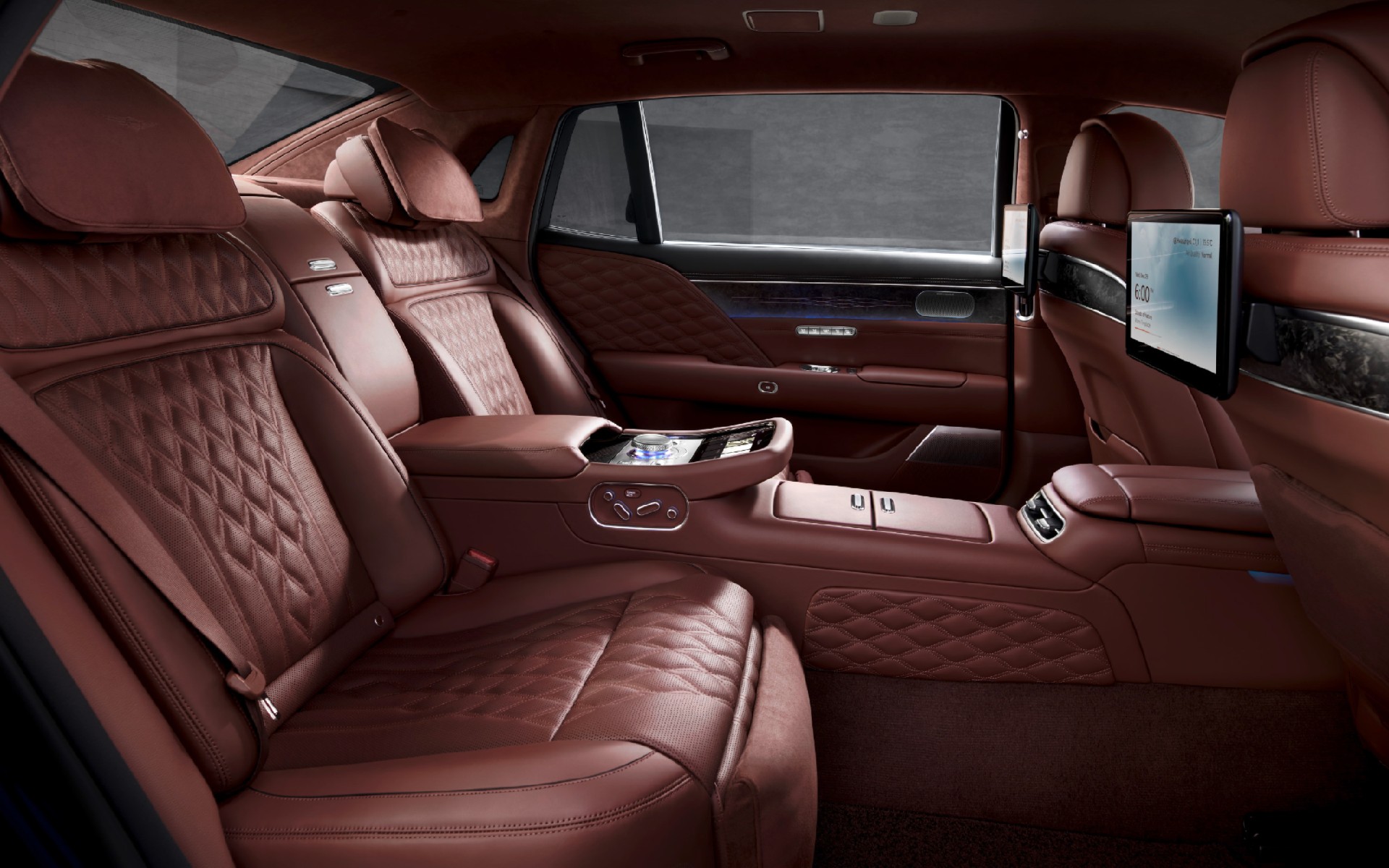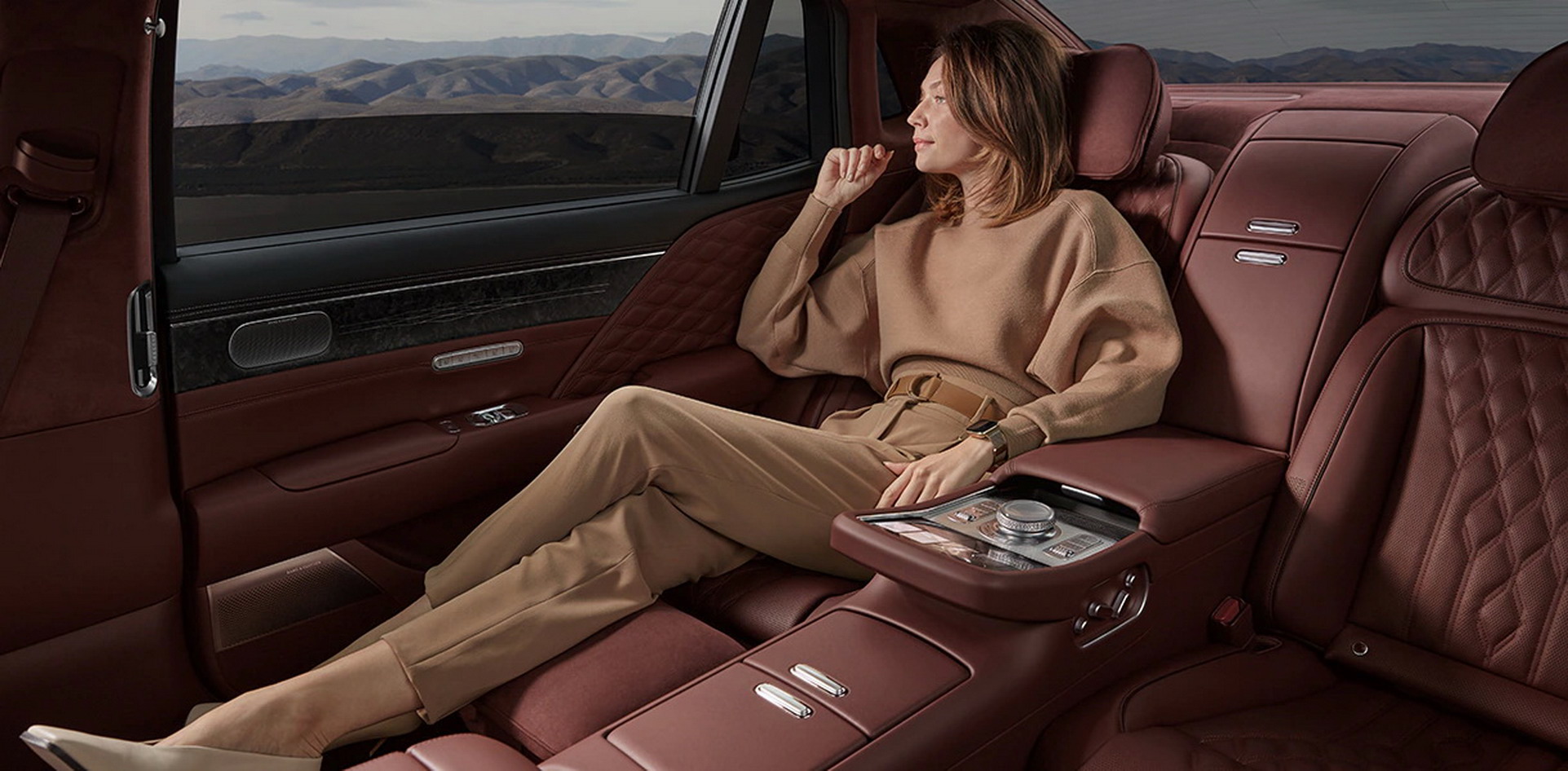The term luxury sedan is associated with the Mercedes-Benz S-Class, the BMW 7-Series, and the Audi A8. However, challengers like the Lexus LS or the more recent Genesis G90 are representing solid alternatives to the German trio. The Korean model is the latest addition to the segment, with Genesis debuting two generations and a facelift in six years’ time. For this reason, we decided to take a closer look and see how far the G90 has come in terms of design, tech, and specifications.
Let’s start with a brief history lesson. Genesis became a standalone brand in 2015 as the premium division of the Hyundai-Kia Group. The luxurious flagship needed to help establish the new brand was originally introduced in Korea in late 2015 as the EQ900, effectively replacing the Hyundai Equus. The same model arrived in the US market for the 2017 MY bearing the G90 nameplate.
By then, Genesis had significantly evolved in terms of design, so an early facelift of the G90 was introduced in 2018, arriving in the US for the 2019 MY. Nevertheless, the major update didn’t stop the company from unveiling an all-new second-generation G90 in December 2021. This one is based on a new platform and incorporates the latest design and technology features of the group. So now you know the essential, let’s dig deeper into each version of the Korean flagship.
Watch: 2020 Genesis G90 Vs. 2019 Mercedes S-Class
First Generation
› Length: 5,205 mm (204.9 in) / 5,495 mm (216.3 in)
› Width: 1,915 mm (75.4 in)
› Height: 1,495 mm (58.9 in) / 1,505 mm (59.3 in)
› Wheelbase: 3,160 mm (124.4 in) / 3,450 mm (135.8 in)
› Weight: 1,995 – 2,290 kg (4,398 – 5,049 pounds)
› Engines: 3.8-liter V6 / 3.3-liter twin-turbo V6 / 5.0-liter V8
› Power: 311 hp / 365 hp / 420 hp
› Torque: 293 lb-ft / 376 lb-ft / 383 lb-ft
› Transmission: 8-speed automatic, RWD or AWD
› On Sale: 2015-2019 (pre-facelift) and 2019-2021 (facelift)
Second Generation
› Length: 5,275 mm (207.7 in) / 5,465 mm (215.2 in)
› Width: 1,930 mm (76.0 in)
› Height: 1,490 mm (58.7 in)
› Wheelbase: 3,180 mm (125.2 in) / 3,370 mm (132.7 in)
› Weight: 2,025 – 2,175 kg (4,464 – 4,795 pounds)
› Engine: 3.5-liter twin-turbo V6
› Power: 375 hp
› Torque: 391 lb-ft
› Transmission: 8-speed automatic, RWD or AWD
› On Sale: 2022-
Genesis’ first standalone model represented a big leap in terms of design compared to earlier Hyundai-badged flagships. It did have hints of the S-Class in the taillights, a little bit of Audi in the front grille, and some Bentley inspiration in the logo, however it was a decent try overall.
The facelift managed to vastly improve the face of the brand giving the G90 a unique look with the luxurious Crest grille, the LED strip in the headlights, and the additional side gills. The all-new second-generation model arrived with futuristic looks thanks to the thin quad-lamp headlights which in combination with the slimmer grille made it look wider and cleaner.
From the profile, all G90 models featured imposing proportions, especially in the long-wheelbase variants. While the original is still nice, the facelift shows how much a design can be improved with a mid-cycle update, despite keeping the greenhouse and a few body panels unchanged. The wire-style alloy wheels also make a big difference in this specific trim making it look like the pinnacle of Korea’s automotive sector at the time.
Compared to its predecessors, the 2022 Genesis G90 almost looks like a concept car. While the design is cleaner with fewer lines, the end result looks more premium, with the new platform allowing for a sleeker shape. The two very thin headlights continue in the front fender, the windowline is more modern with a sharper angle at the C-pillar, and the dropping character line is further emphasized by the wider rear shoulders.
Read Also: An All-Electric Genesis GV90 SUV May Launch In 2023
The rear end has evolved in a similar manner. The almost generic-looking taillights of the original gave way to a high-tech full-width redesign for the facelift. The second generation moves further into the future with thinner LEDs and a prominent spoiler integrated on the tailgate. The designers also cleaned up the lower part of the car with simpler chrome accents connecting the wheelarches and elegant dual tailpipes.
See Also: Genesis Wants To Cement Luxury Credibility With Sophisticated Brand Experience In NYC
The interior quality, fit and finish alongside the available technology features is a very important factor for buyers of the luxury segment. The dashboard of the original G90 was kind of dull by today’s standards, with a BMW-inspired center console and a 12.3-inch infotainment screen that appears to be small but was rather large for 2015. The facelift sorted out those issues with a more modern design getting closer to the philosophy of Mercedes-Benz. The screen was better integrated, the climate vents became thinner, the controls looked more premium, and the infotainment received an important update.
This takes us to the 2022 model that once more proves it is a clean-sheet design. The digital cockpit consists of two 12.3-inch screens incorporating Genesis’ new infotainment with the latest connectivity features. The rotary shifter remains but is now more beautifully integrated on the center tunnel together with the jewel-like shifter for the automatic gearbox. There is also a two-spoke steering wheel seemingly inspired by modern art, clean horizontal lines on the dashboard following the prevailing trend, and beautiful patterns on the leather-upholstered seats.
See Also: 2022 Genesis Electrified GV70 Has 482 HP And 800-Volt Charging Technology
The rear seats are usually the main focus for designers – and many buyers – of flagship luxury sedans. From its introduction, the G90 offered plenty of legroom for rear passengers, especially in the long wheelbase variant with two individual seats featuring extendable footrests. In the first generation, Genesis tried hard to impress adding wood trim, fine quality leather, advanced climate control, a premium Lexicon sound system, a pair of 9.2-inch screens, and a cooled compartment. The facelift looks quite similar but new materials like Natura wood trim and quilted Nappa leather upholstery made it more appealing.
In terms of technology, the G90 always had the latest systems from Hyundai and Kia which means that even the standard equipment of the first-gen model doesn’t sound outdated. The facelift added a few extra bits but the big update happened with the second generation. This comes with a 23-speaker Bang & Olufsen sound system, dual panoramic sunroof with integrated ambient lighting, sustainable wood trim, a fragrance system, ergo-relaxing seats offering four types of massage, and a new 8-inch touchscreen on the armrest allowing the rear passengers to control everything.
So that is our Genesis G90 comparison. Let us know which generation is your favorite, and why, in the comments section below.








